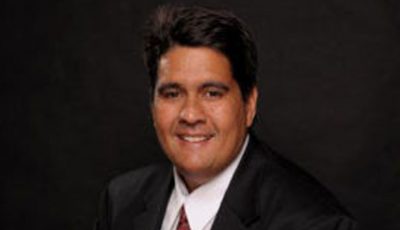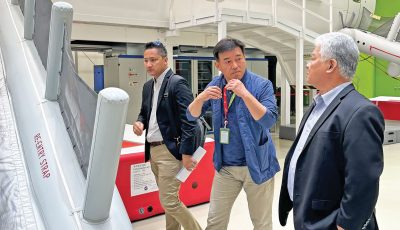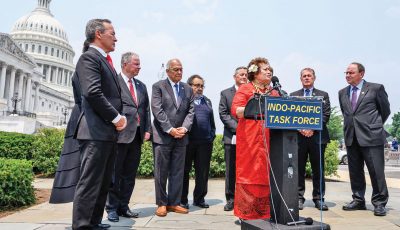Hang Gong Hang Tian Da Xue
My Lei Feng (an ordinary male volunteer who died young is China’s exemplar in volunteer work) while teaching at the Hang Gong Hang Tian Da Xue was spent on weekends with Shou Wang school for children.
Tian is “sky” that gives us “Aerospace” and Da Xue is “big school”, i.e., a university, thus Shenyang Aerospace U. Other than the fact that the school name is lent to the subway stop a block away from the main gate, to delve into the school’s character is probably best read from calligraphy emblazoned near the front gate. The phrase is De Neng Bin Jin Yong Yi Xiang Yuan.
Individually, they denote for de = virtue, neng = competence, bin = together, jin = advance, yong = courage, yi = resolute, xiang = soar, and yuan = forever. My take is prosaic: “Resolutely advance together with competence and virtue soaring forever.” I suspect that the aesthetic precedes consideration of the authentic; beauty trumps reality in the understanding of the phrase. The calligraphy rather than the spoken Putunghua is more helpful to the Chinese reader.
Big words to describe processes around educational aims in the East include the influence attributed to Kong Fu Tzu, aka Confucius, and the Mao-think that redefined it. In the West, the renaissance and enlightenment eras gird the great walls of its learning.
Since the Han of 206 BCE transcended the preceding Qin’s adherence to strict rules (often referred to as legalism), the thoughts of Kung Fu Tzu dominated the rhetoric of governance, simply because the activity of rationalization followed the path of stability rather than the unsettling of the pugua paradigm, a pillar in governance “with Chinese characteristics.”
Two thousand years of dynastic turmoil is often analyzed through a ruling dynasty’s adherence to the “mandate of heaven” that legitimized a reigning family’s status to rule justly and earned the fealty of the learned and privileged class that in turn guided the affairs of the hoi polloi.
The lower class correspondingly stayed faithful but subservient to the upper class that supported ruling families until a change is deemed necessary, not of the system itself but on the ruling family. In all these, the model of relationships from top to bottom, and bottom to top, is that of the “family”, heavily virtue-laden as a clan.
The merit system in China judged one’s familiarity with calligraphic representations of Confucian thoughts and history; the civil service exam that choose government roles had for a long time been the gauge of one’s acquaintance with the corpus of Confucian thoughts until Mao came along and noticed that academia held the gates to the Communist Party and proceeded to chasten the halls of academy through exposure to agrarian posting and learning. Self-taught, the Cultural Revolution spawned the informal Dong Nong Bing Da Xue (Worker-Farmer-Soldier University) that upended the stability, equanimity, and tranquility of many urban dwellers and the illuminati.
The Renaissance in Europe 1400 CE was a return to classical forms in literature and art, harking back to Socrates, Plato, and Aristotle, influencing the secular thought patterns of the West, and adhered to by Judeo-Christian-Muslim theologies. It hankered back to Greco-Roman civilization. The constant was a transcendent Will of Deity emanating from the mysterious YHWH of Jerusalem, Olympus’ Zeus and the Forum’s Deus. Thrones and miter were determined by articulated coherence of theologies invoking sacred writ.
The enlightenment of the 1700 CE came as shock to the system as evolution suggested that discernable cosmic intelligence referred to as deity is but personified human rationality that one aligned to or stand up against in proud but resolute defiance. Chaos was the order of creation, manifested notably in the changes brought about by the American and French revolutions.
China’s 1912 revolution challenged Confucian order, awakened national sentiments against colonizing Europe and Imperial Japan, but retained the stranglehold of its decrepit civil service. The revolution in Russia erupted in 1917 that birthed a revolutionary who thought of contradictions; Mao-think got quoted in red books later. In 1949, change took the front seat while Confucian stability sat at the back. Deng Xiaoping found a way of keeping stability in the yin-yang of chaos and order, and in pushing industrialization, introduced “nuclear” family as a live option and the individual as democracy’s necessary component.
Continuity is big in Chinese thought; chastened Confucius is back. Much of China’s educational thrust remains on getting “certificated” in society though no longer on the mandate of heaven as it is on the skill to assemble gadgets in the factory line.
When “certificated” U grads prefer to hawk shoes on the sidewalk’s night market rather than wear office attire, it is time to revisit formal pedagogy. I have seven years to inject my contribution from inside the ramparts of its great wall.



























